-
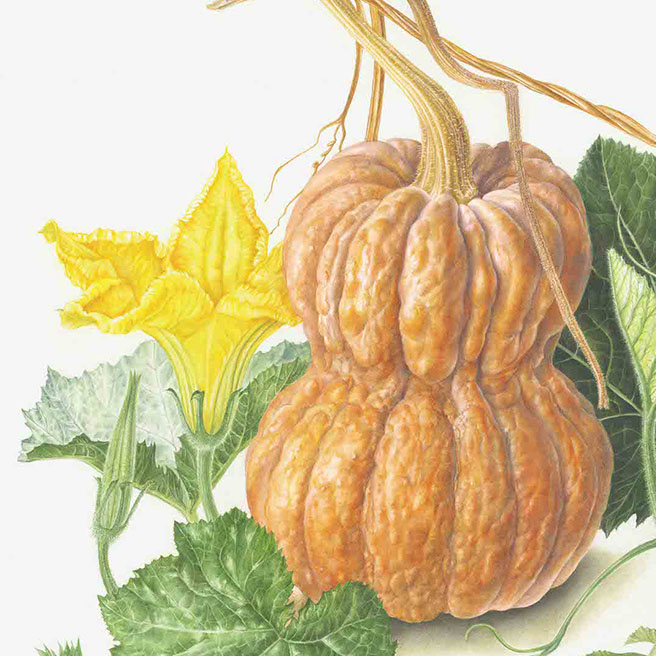
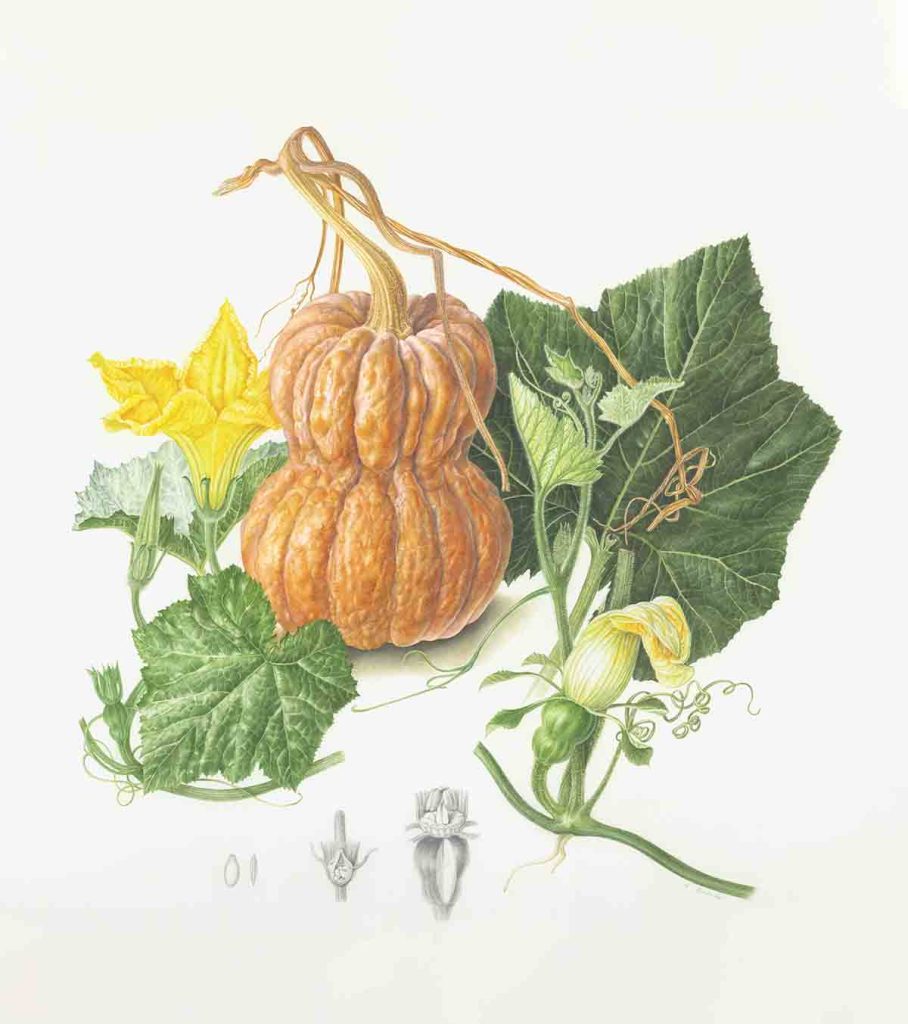
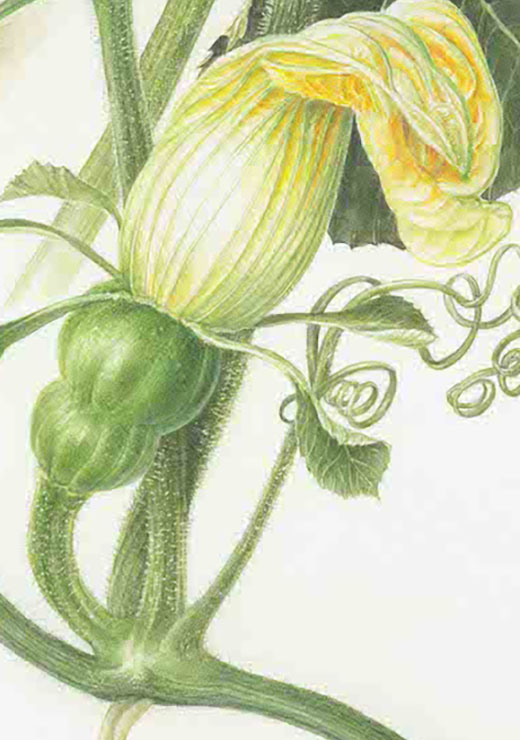
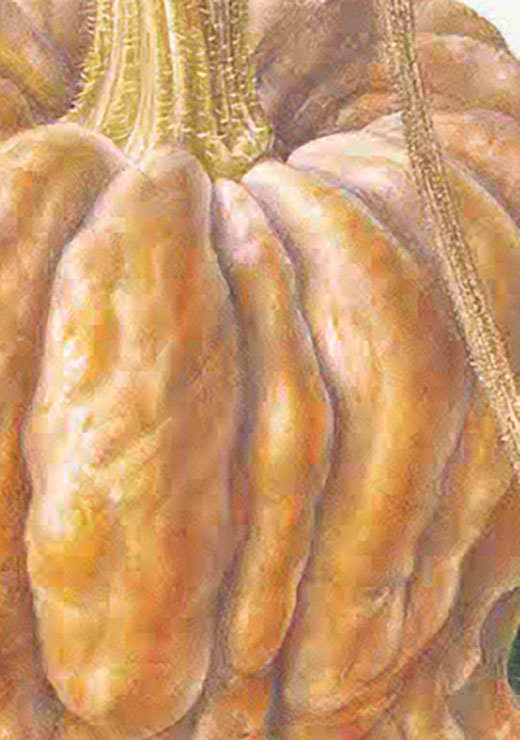
Shishigatani Kabocha pumpkin
Cucurbita moschata鹿ケ谷かぼちゃCrops grown for our food are bred to be produced in large quantities, with taste good, and be consistently available. Therefore, the fields of traditional vegetables, which have been cultivated locally since ancient times, have been replaced by crops that are tasty, well-shaped, and stably supplied for distribution. Traditional vegetables play an important role in passing on the culture and history of the land to the next generation. We must not let the traditional vegetables that have blessed us become extinct. The Shishigatani kabocha Pumpkin is a traditional Kyoto vegetable. Before Western pumpkins were introduced, it was the most common type of pumpkin for people in Kyoto. The city of Kyoto has designated it as a specialty vegetable and has contracted with farmers to grow it and preserve its seeds.
私たちが食べるために栽培される作物は、大量に、美味しく、そして安定的に作れるよう工夫がされてきた。そのため古くから、地産で育てられてきた伝統野菜の畑は、美味しく, 形も良く、そして安定的に流通供給される作物としての植物にとってかわっていった。伝統野菜はその土地の文化と歴史を次世代に伝える重要な役割を持つ。私たちに恵みをもたらしてきた伝統野菜が絶滅しないようにと願うばかりです。鹿ケ谷かぼちゃは京都の伝統野菜。西洋カボチャが作られるようになるまでは、京都の人々にとっての一般的なかぼちゃであったが、作付けが激減した。現在は、京都市が「京都市特産そ菜保存ほ」として、契約農家に栽培と種の保存を委託している。
46x46cm Watercolor on paper 紙に水彩
-
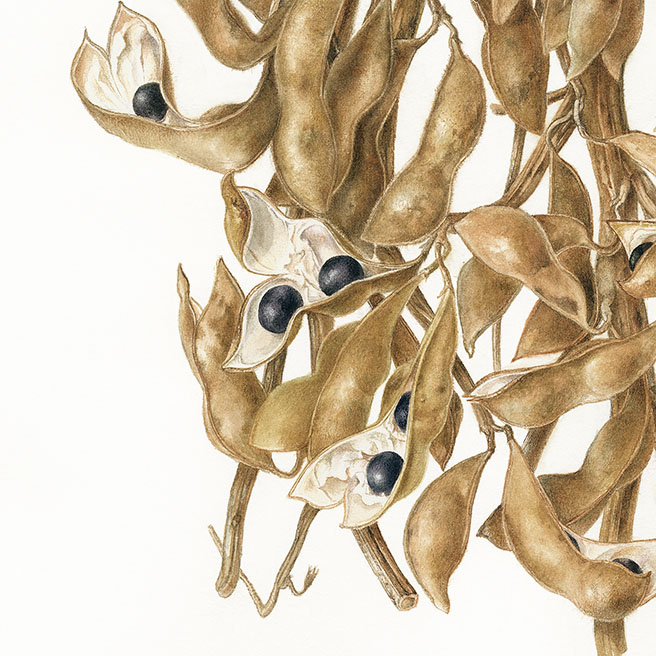
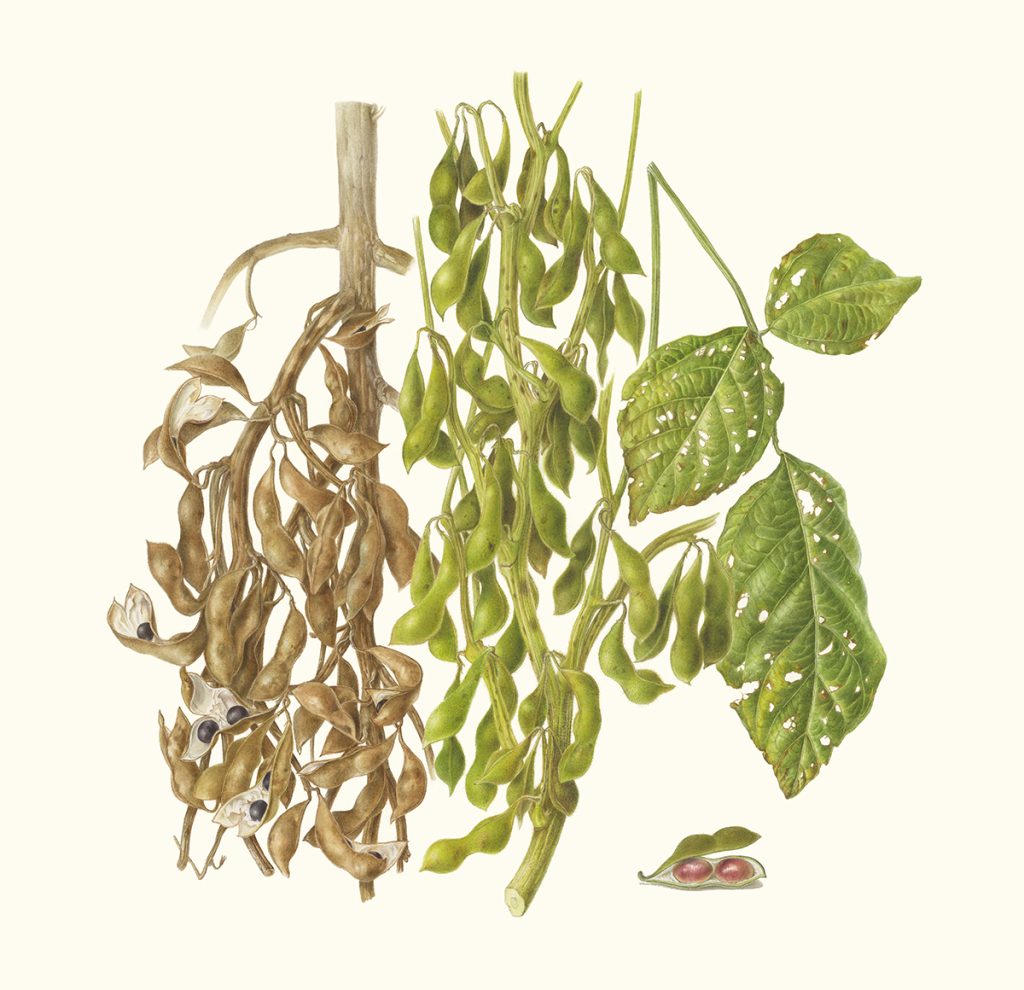
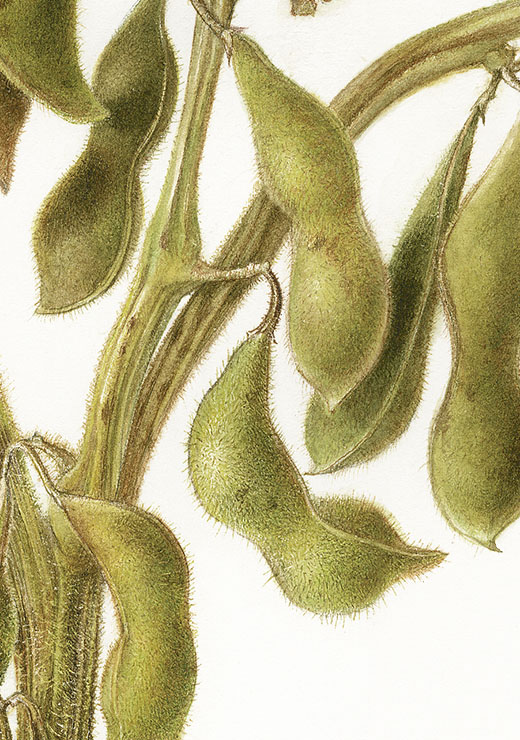
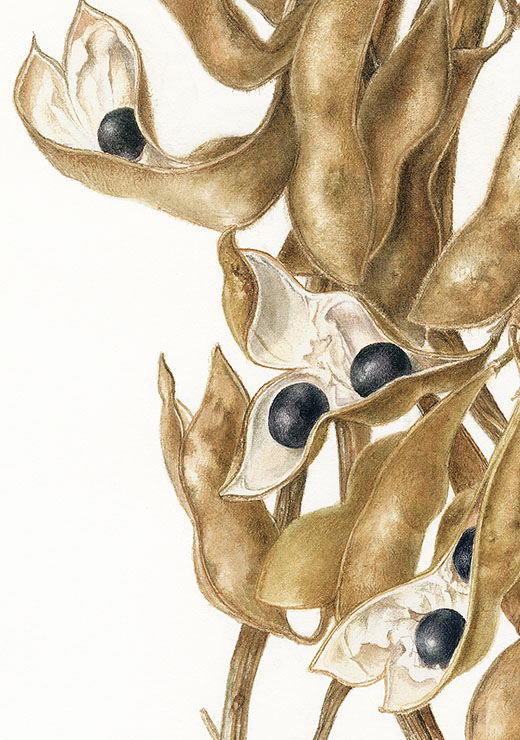
Black soybean ‘Tambaguro’
Glycine max (L.)Merr.丹波黒大豆Edamame has now become a popular appetizer all around the world. The word “edamame” is made up of the words “eda” (branch) and “mame” (bean). According to historical records from 300 years ago, soybeans were boiled and sold on the branch. This is said to be the origin of edamame, because it was often sold as a street food. When black soybeans are boiled as edamame, they turn gray due to the anthocyanin contained in their skins, although farmers ate them, people thought they were spoiled and avoided them. However, black soybeans have become very popular in recent years as a delicacy because they are larger and tastier than regular edamame. In the Tanba Sasayama region, one- third of the black soybeans are sold as edamame in October. The rest are harvested at the end of November, dried and used as an essential ingredient in traditional Japanese New Year’s dishes.
今や世界中で人気のアペタイザーとなった「枝豆」。枝豆」の「枝」は枝、「豆」は豆を意味する。300年前の文献によると、大豆を茹でて枝に付けた状態で街道沿いで売られていたことがあり、これが「枝豆」の起源だと言われている。黒大豆を枝豆として煮ると豆の皮に含まれるアントシアニンによる変化で青っぽくなるため、農家では食されていたものの、腐っていると誤解されて不評だった。しかし黒大豆枝豆は普通の枝豆よりも大きく、味も良いので、近年では珍味として、大変人気が高い。丹波篠山の農家では、黒大豆の3分の1は10月に枝豆として販売され、残りは11月末に収穫し、乾燥させ、正月の伝統料理の重要な材料として欠かせない一品となる。
47x48.5cm Watercolor on paper 紙に水彩
-
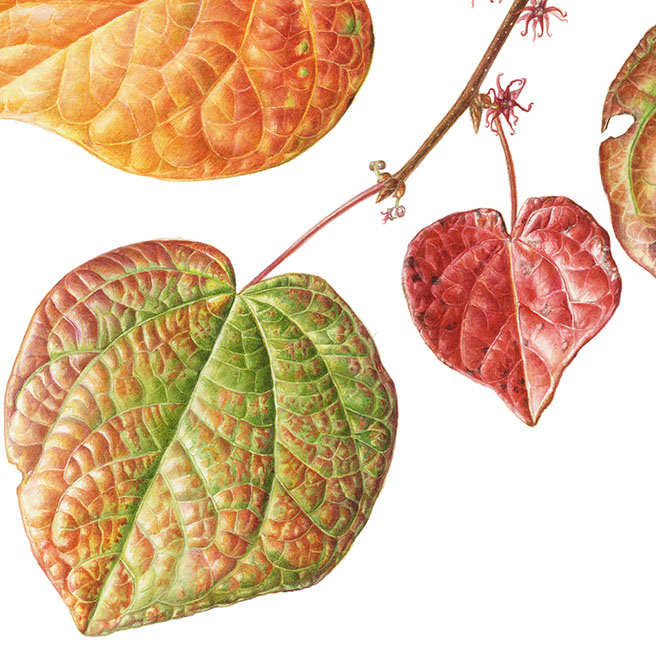
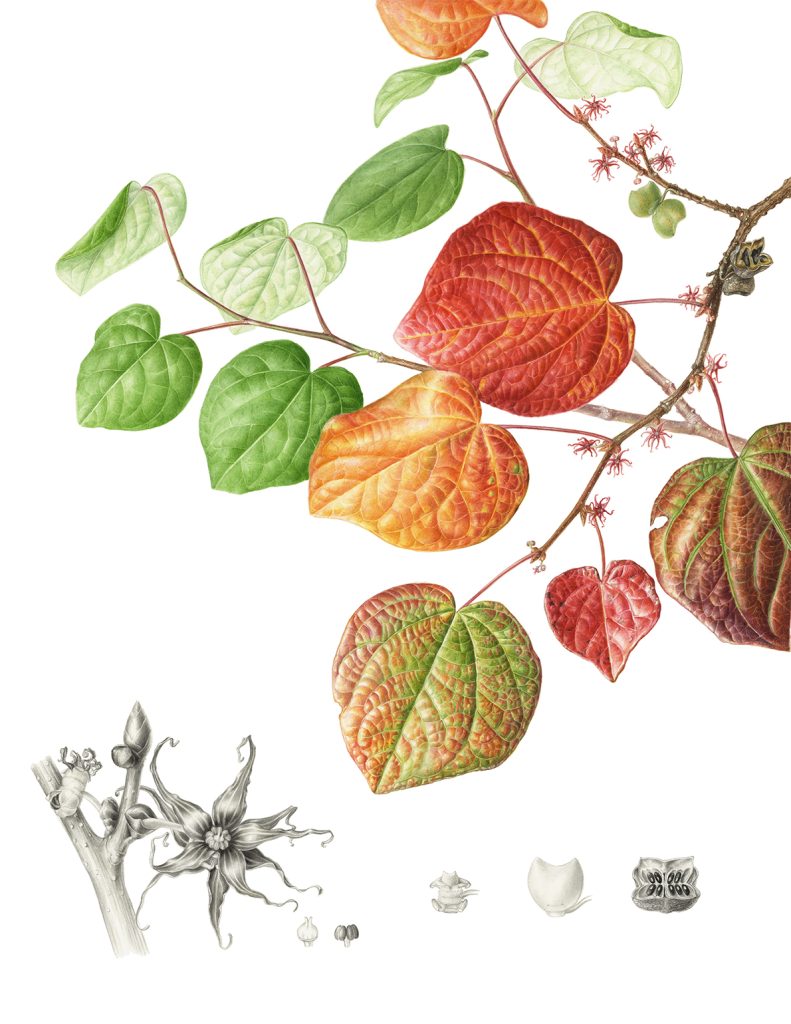
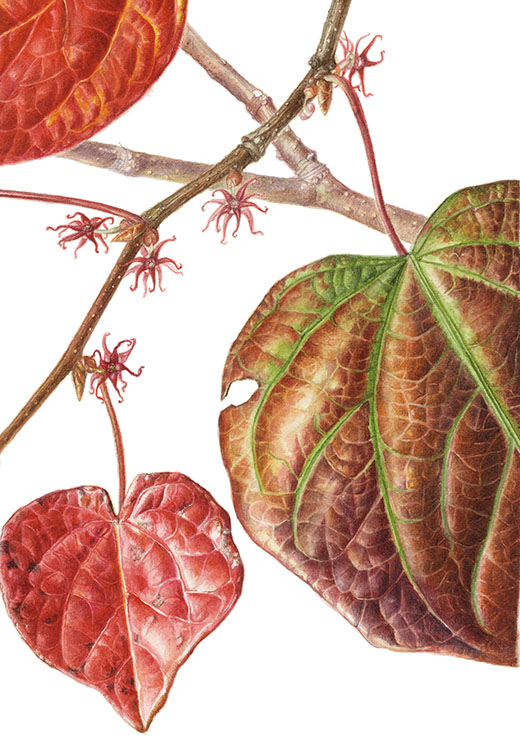
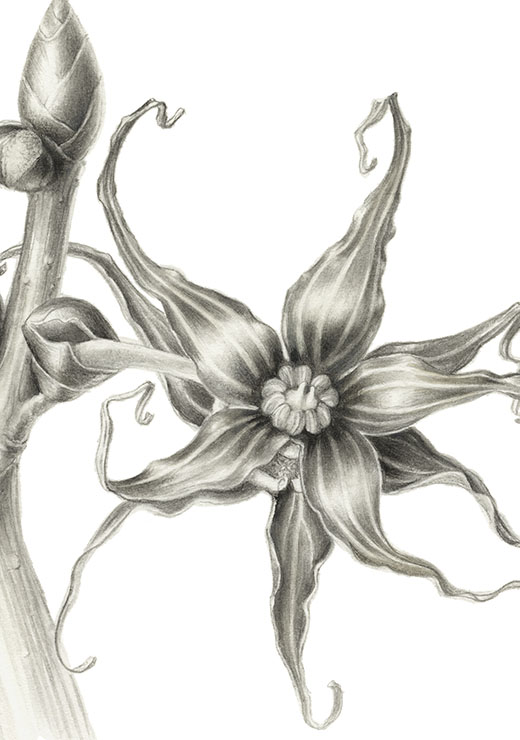
Disanthus cercidifolius
Disanthus cercidiflolius Maxium.マルバノキThis Disanthus cercidifolius was painted for the 2016 "Flora Japonica Exhibition." In the fall, its palm-sized, heart-shaped leaves turn various colors̶deep green, yellow, orange, and bright red̶and shine in the sunlight, highlighting their beauty. At the same time, it produces small red flowers one after another and emits a foul odor reminiscent of rotten fish. The flowers bloom in late autumn, when insects are scarce, to attract flies and other insects. The fruits hang from the branches and ripen the following autumn, splitting open to reveal the seeds. This work depicts the growth of a Disanthus cercidifolius observed over two years in the Ohno Nature Observation Forest in Hiroshima Prefecture and other parks.
このマルバノキは、2016年の「Flora Japonica展」のために描iた作品。秋には、深い緑、黄色、オレンジ、赤と様々な色彩に紅葉した手のひらサイズのハート形の葉が日光に輝き、その美しさが際立つ。また、同時に小さな赤い花を次々と咲かせ、腐った魚のような悪臭を放つ。これは花が昆虫が少なくなる晩秋に開花するため、ハエや他の昆虫を引き寄せるためだ。 果実は枝から垂れ下がり、翌年の秋に熟して、硬い殻が裂けて種を落とす。2年間にわたって広島県の大野自然観察の森などで見たマルバノキの成長を描いた。
44 x 34cm Watercolor on paper 紙に水彩
-
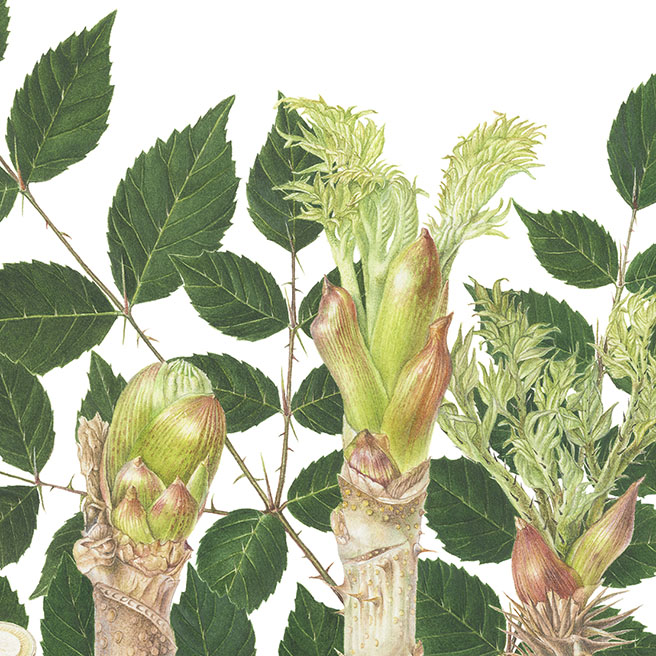
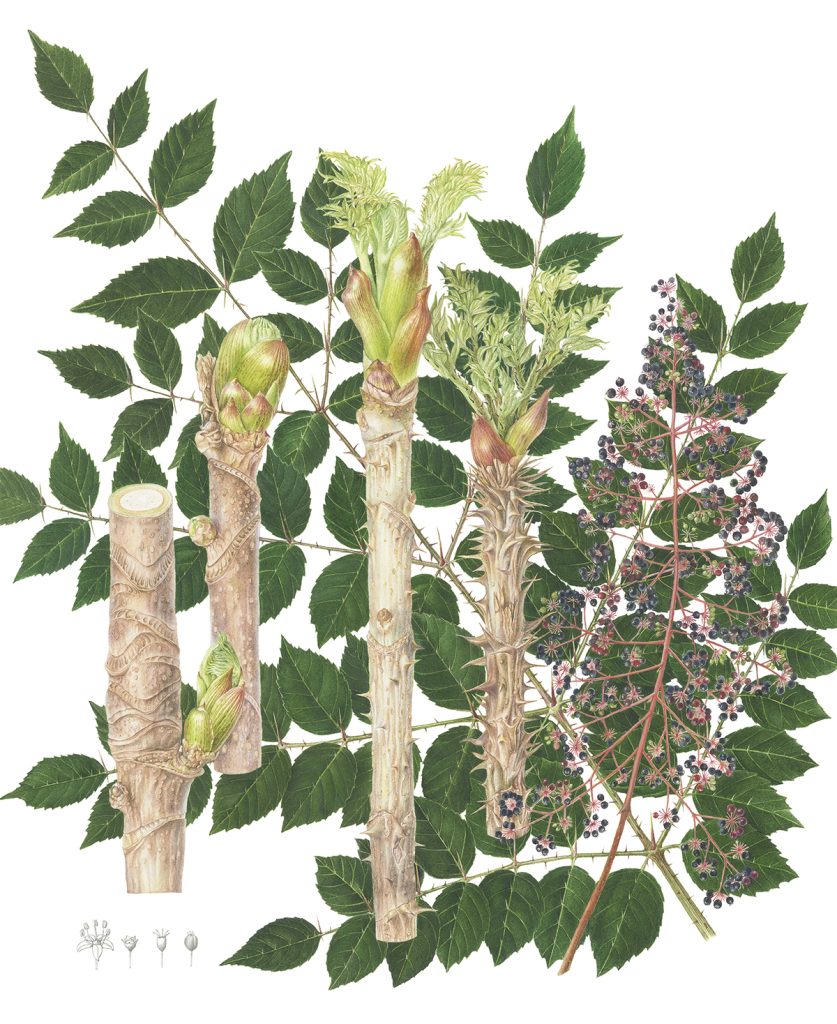
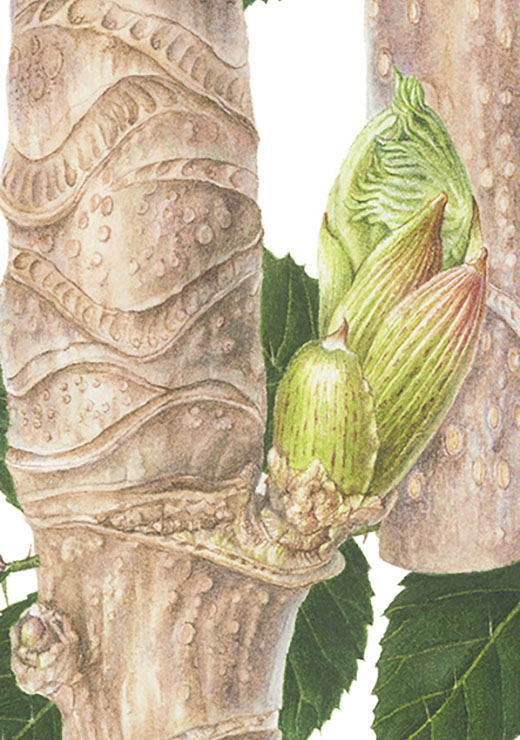
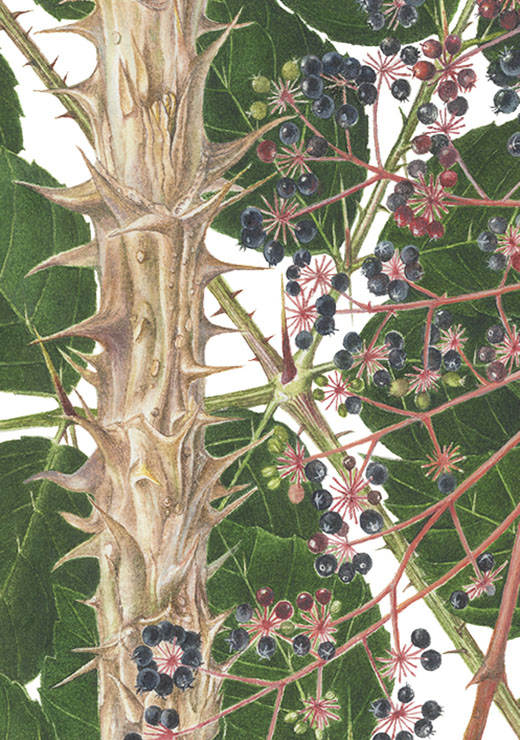
Japanese Angelica tree
Aralia elata (Miq.) Seem.タラノキSince ancient times, spring sprouts have been prized as wild vegetables and are commonly referred to as the “king of wild vegetables”.They are typically cooked as Tempura dishes are famous.In September, it produces white flowers, and its berries, are about 3 mm in diameter, resemble small blueberries but taste bittersweet. It is said to be good when made into fruit wine. I collected these from a friend's property located on the mountainside of Mt. Rokko, Hyogo prefecture.
タラノメは古くから春の高級山菜として珍重され、俗に「山菜の王様」と称される。天ぷらにするのが有名だ。9月には、白い花が咲き、実は3mm程のブルーベリーのような赤黒い実だが、ほろ苦い。果実酒にもできるそうだ。兵庫県六甲山中腹に位置する知人の敷地内で採集できた。
41.5 x 32 cm Watercolor on paper 紙に水彩
-
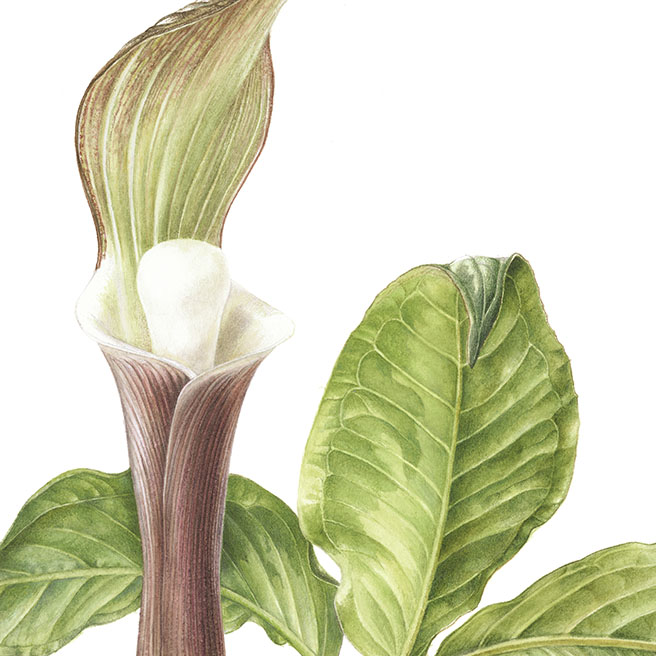
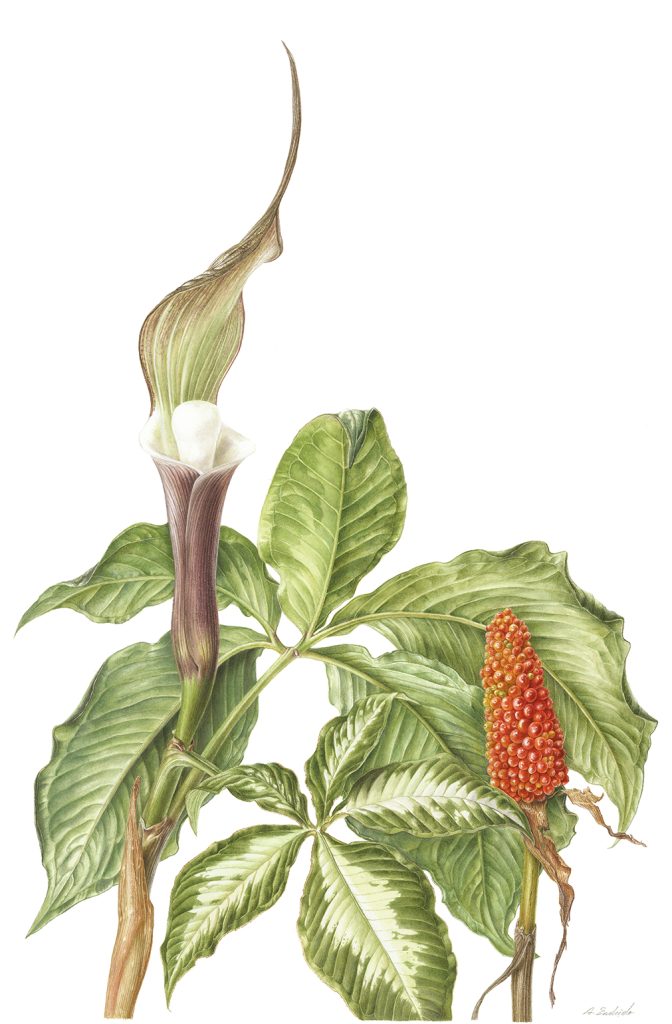
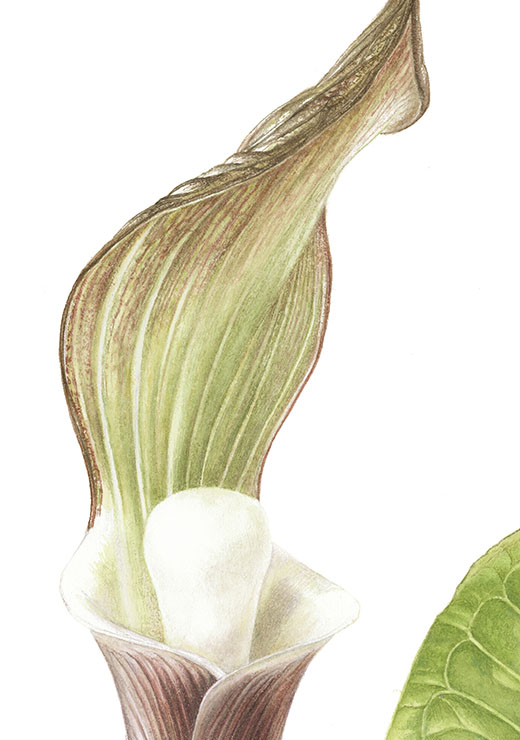
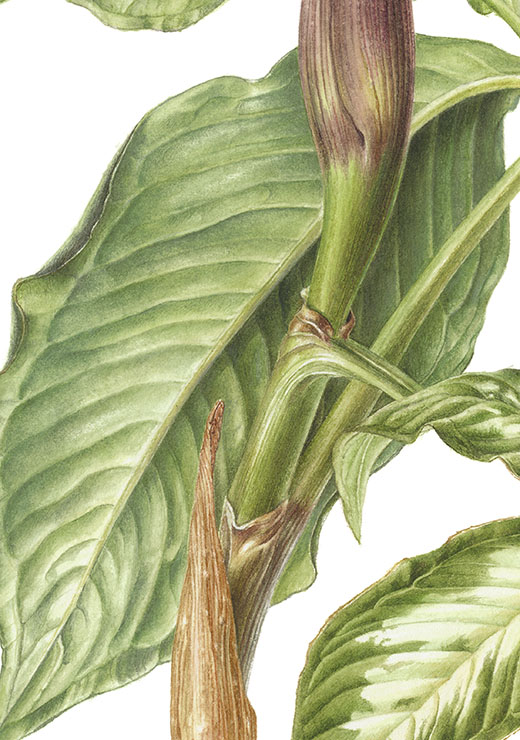
Japanese-Jack-in-pulpit
Arisaema sikokianum Franch.et Sav.ユキモチソウIt is a perennial plant of the Arisaema genus. This is characterized by a white, fluffy bulge in the center of the flower that resembles a rice cake. It grows wild in the bright forest near my house on Mt. Rokko. I. I have been observing it for several years, and even in the same place it naturally increases and decreases. We must protect these rare wildflowers.
サトイモ科テンナンショウ属の多年草。花の中央の白く、餅が膨らんだように見える付属体が特徴的。全草に毒性がある。六甲山では、明るい林床に自生している。数年かけて観察しているが、同じ場所でも自然に増えたり減ったりしている。希少な山野草を守りたいと思う。
44.6 x 29.5cm Watercolor on paper 紙に水彩
-
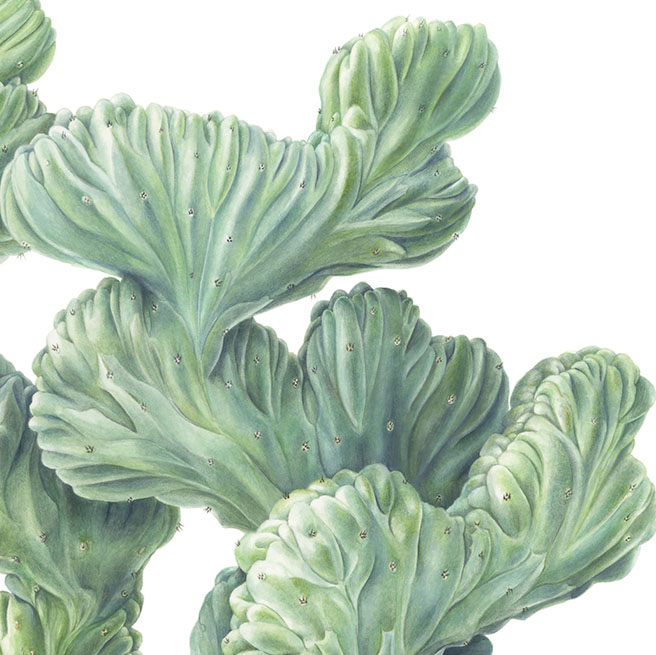
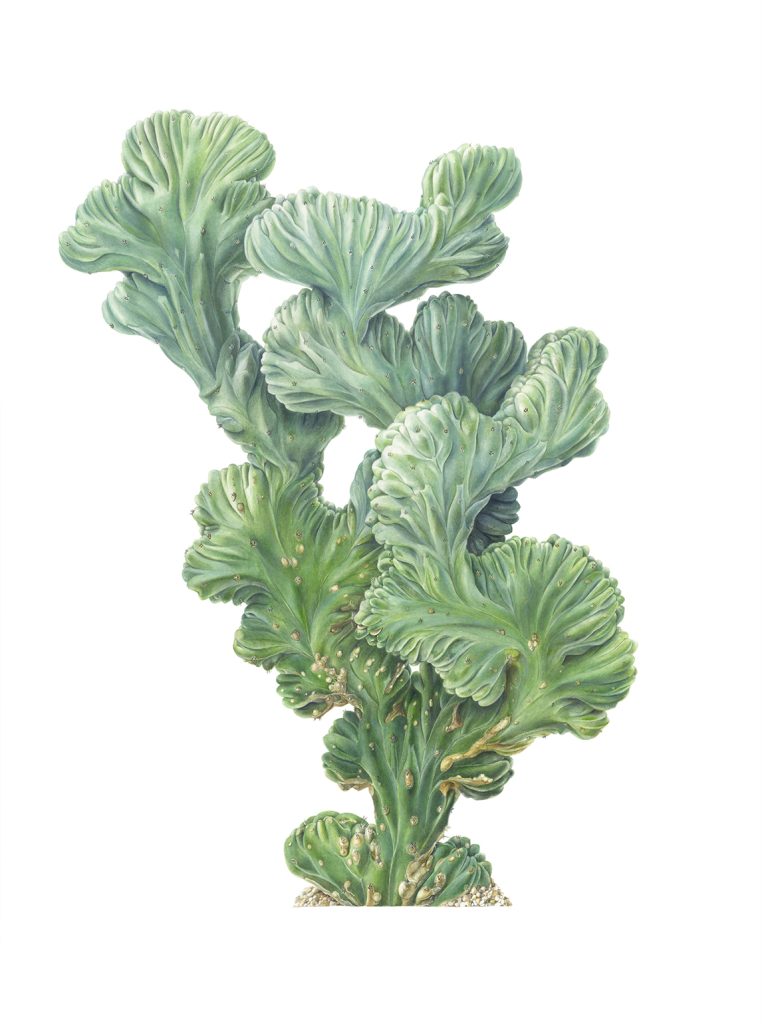
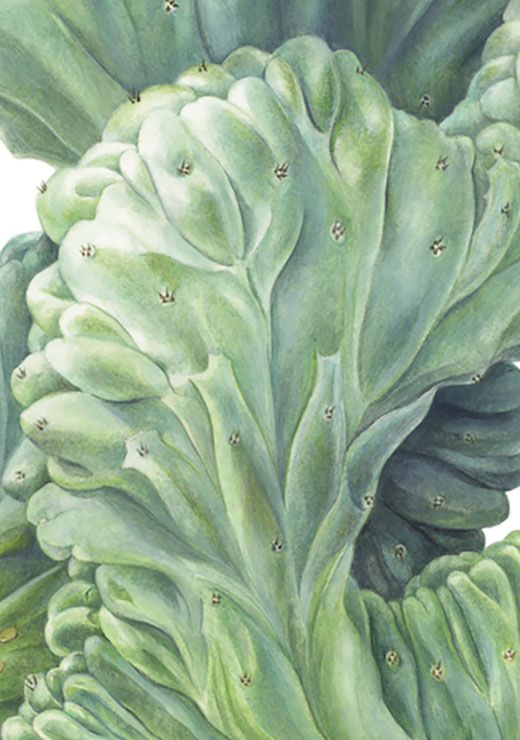
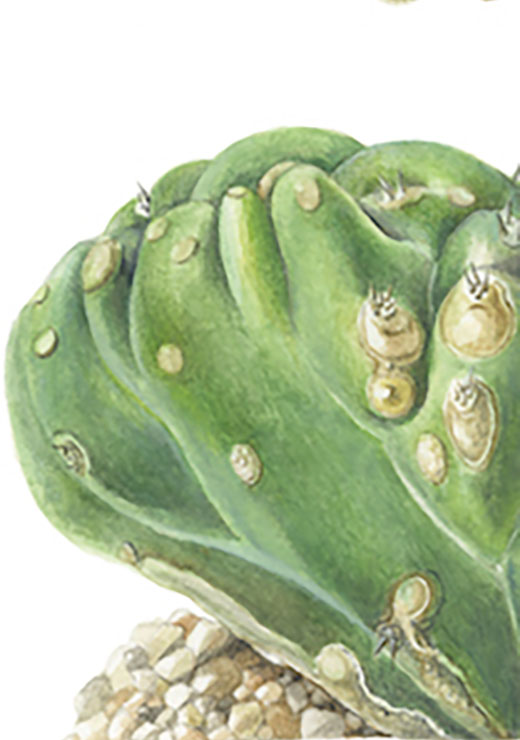
Dinosaur Back Cuctus
Mytillocactus geometrizans f. Cristata竜神木綴化Dinosaur Back cactus is characterized by its beautiful blue-green color and solid, wax-like texture and splits into fine folds at the tip. It is native to a wide area stretching from northern Mexico to the state of Oaxaca. In this work, I used gouache for the first time. The surface has both white opaque areas and translucent emeraldcolored areas. I used partially transparent watercolors in combination with gouache. I painted this plant at Sakuya-Konohana-Kan in Osaka, Japan.
多肉植物の中で、龍神木綴化は、先端が細かいヒダのように分かれ、白い粉をまぶしたような青緑色の表皮が特徴。原産地はメキシコ北部からオアハカ州にかけての広範囲にわたる地域。この作品では、初めてガッシュを使用した。よく観察すると表面の色には白く不透明な部分と、エメラルド色の半透明の部分があるので、部分的に透明な水彩絵具をガッシュと併用して使用した。大阪市の咲くやこの花館で見つけた植物を描いた。
66 x 51cm Watercolor on paper 紙に水彩
Please refrain from unauthorized reproduction, copying,
or use of the images and artworks on this website on other sites.
当サイトの画像・作品の無断転載、複製、
または他サイトでの使用はご遠慮ください。
